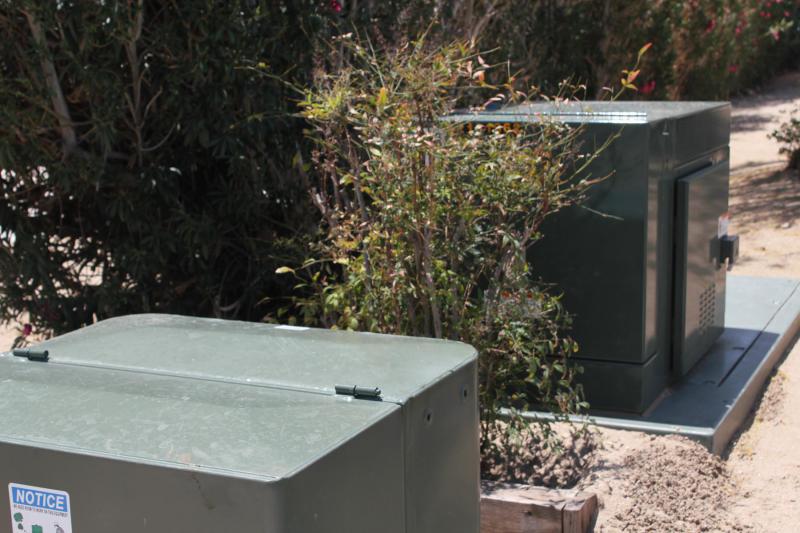San Diego Gas and Electric Company’s (SDG&E) utility microgrid in the 2,800 customer residential community of Borrego Springs, California (145 kilometers northeast of San Diego) is an example of an “unbundled utility microgrid”, where the distribution assets are owned by the utility, but some or all of the distributed energy resources are owned by customers. The goal of the project is to provide a proof-of-concept test as how information technologies and distributed energy resources (solar PV and batteries primarily) can increase utility asset utilization and reliability.
The project’s partners include Lockheed Martin, IBM, Advanced Energy Storage, Horizon Energy, Oracle, Motorola, Pacific Northwest National Laboratories, and University of California San Diego. The U.S. DOE supported the project with $7.5 million of federal funding, with additional funding coming from SDG&E ($4.1 million), CEC ($2.8 million), and other partners ($0.8 million).
The community is a somewhat isolated area fed only by a single sub-transmission line. Islanding of the entire substation area is being demonstrated for reliability reasons as well as a potential alternative to building additional transmission capacity. Prior to the microgrid project launch, the community already had many rooftop solar PV systems installed. SDG&E is exploring the possibilities of price driven demand response, via interaction with in-home storage, electric vehicles, and smart appliances using the areas installed smart meters and home area network devices.
The total microgrid installed capacity will be about 4 MW, with the main technologies being two 1.8 MW diesel generators, a large 500 kW/1500 kWh battery at the substation (which will be instrumental in achieving peak load reduction), three smaller 50 kWh batteries, six 4 kW/8 kWh home energy storage units, about 700 kW of rooftop solar PV, and 125 residential home area network systems.
In terms of control systems, the project incorporates supervisory control and data acquisition (SCADA) on all circuit breakers and capacitor banks, Feeder Automation System Technologies (FAST), outage management systems, and price driven load management at the customer level.
SDG&E will be conducting a detailed cost-benefit analysis of the project, using a methodology developed by the Electric Power Research Institute for the DOE’s use in evaluating smart grid projects. The benefits are typically classified into four categories: economic, reliability and power quality, environmental, and security and safety. If the project (or portions of it) proves to be cost effective, then SDG&E will likely seek out future microgrid projects.



